Check out the farmers market for fall produce. Here are some things you can expect to see:
Belgian Endive
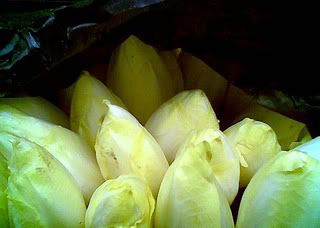
If you’re looking for a low-cal vegetable that packs a heavy
nutritional punch, Belgian endive – or French endive, chicory or
witloof, as it is also known – is an excellent source of vitamins A and C
and a great source of fiber, all for less than 8 calories per cup!
Although available year round, Belgian endive peaks in late fall
(November) and is generally good through early spring. When shopping for
Belgian endive, look for smooth, pale yellow or white leaves that
appear crisp in texture. Endives are best when steamed and their shape
lends them well to serving as a vessel for various fillings. In
addition, endives are delicious in salad or braised and served with a
pot roast.
Broccoli
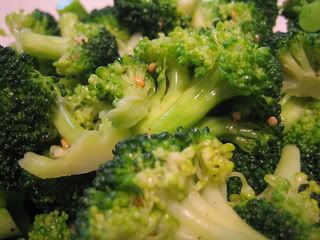
A member of the cabbage family, broccoli is an excellent source of
vitamin C – providing 245% of your recommended daily allowance per 1 cup
serving – as well as vitamin K and vitamin A. A multi-talented little
vegetable, broccoli is thought to have excellent anti-cancer properties.
The phytonutrient indole, for example, suppresses a chemical that is
thought to support tumor growth, while sulforophane is thought to
detoxify the body, flushing out potentially carcinogenic substances. As
such, studies have linked the consumption of broccoli with a reduced
risk of cancers of the bladder, liver, lung, colon, breast, ovaries and
prostate. In addition, broccoli is an excellent source of
bone-fortifying calcium and a great source of folic acid, which is
thought to reduce the risk of birth defects. Broccoli can be eaten raw
or cooked, but recent studies suggest that if you do plan on cooking it,
steaming is the best way to preserve all of the vegetables various
enzymes and nutrients.
Brussels Sprouts
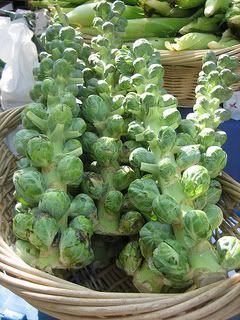
Another member of the cabbage – or brassica – family, Brussels
sprouts are also much touted for their cancer-fighting properties.
However, Brussels sprouts in particular are often touted for their
fiber, containing 4 grams of equal parts soluble and insoluble fiber. In
addition, these teeny tiny cabbages are also thought to provide
significant cardiovascular benefits and help reduce the risk of
osteoarthritis, a degenerative form of arthritis that often occurs with
aging. Although available year round, Brussels sprouts peak in the fall.
They are best cooked whole or sliced in half, and are tasty when
steamed or sauteed and served as a side dish.
Cabbage
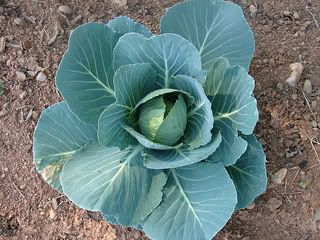
Available year round in grocery stores, cabbage will be at its best –
and readily available at your local farmers’ market – towards the end
of fall. As the head of the cabbage family, cabbage provides all of the
health benefits of broccoli and Brussels sprouts, but, when juiced and
drunk over the course of 10 days, can dramatically reduce the amount of
time it takes to heal a peptic ulcer! When cooking cabbage – or just
about any cruciferous vegetable – it’s important to note that breaking
it apart – either through slicing, cutting or chewing – activates
myrosinase enzymes, which in turn aid the release of anti-carcinogenic
glucosinolates. Although these enzymes are denatured when you cook
cabbage, you can preserve the amount of glucosinolates by slicing or
chopping the cabbage and then letting it sit for between 10 and 15
minutes before lightly cooking, steaming or sautéing for no more than 5
minutes.
Cauliflower
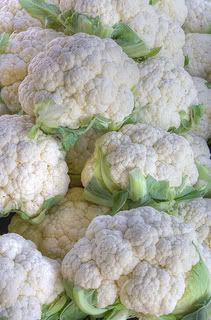
Guess what? This one’s another member of the cabbage family, it’s
only real distinction being that it lacks the chlorophyll necessary to
give it the vibrant green hue of its relatives. But if there’s one
advantage cauliflower does have, it’s that it is so darn adaptable! Miss
eating carb-laden mash potatoes or having your stir fry over rice?
Cauliflower makes a believable – yet far healthier – alternative (and
with just a flip of the food processor switch!) And, new research shows
that if you sprinkle your cauliflower with the spice turmeric, you can
reduce the severity of prostate cancer, both in terms of tumor growth
and metastasis. Although people generally only eat the heads of the
cauliflower (known as the curds), the stem and leaves are also edible
and can be used to add some extra flavor to soup stocks.
Celeriac
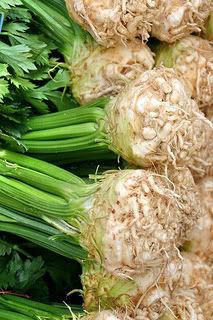
Peaking in October, celeriac – which is often referred to as celery
root, knob celery, and turnip rooted celery – is by far one of the
ugliest vegetables, but certainly one of the healthiest. An excellent
source of vitamin C, vitamin K, phosphorus, potassium, vitamin B6,
magnesium and manganese, celeriac is thought to lower blood pressure and
may also help to reduce stroke risk, with one study from Harvard
University suggesting that men who ate nine servings a day of celeriac
and other potassium-rich foods had a 38% reduced risk of stroke. When
purchasing celeriac, look for firm, small-to-medium, sprout-free roots.
The nutritional benefits of celeriac are best preserved when the root is
sliced and added to salads, although it is also delicious when boiled
(which helps to dilute this root-vegetables somewhat pungent taste) and
added to soups or stocks.
Onions
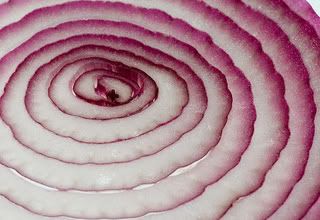
Yes, onion’s are available year round, but they are truly at their
peak in the fall and winter. A true staple in the kitchen, onions are
used to add flavor to sauce, soup, stew, eggs, salads or heck, even as a
side dish all on their lonesome! Sulfur, the compound in the onion that
gives it that great taste, also provides many of its health benefits.
For example, sulfur is though to reduce blood pressure and may also help
to regulate blood cholesterol. In addition, onions are rich in
chromium, which is thought to help prevent fluctuations in blood glucose
levels, and contains a number of flavonoids that promote
gastrointestinal health and reduce the risk of several types of cancer.
Still not convinced? Onions have a number of anti-inflammatory agents
that can help reduce the severity of symptoms associated with arthritis,
asthma, and even the respiratory inflammation associated with good ol’
seasonal cold and flu!
Pumpkin

If there were ever a symbol that fall has arrived, it’s the pumpkin!
In fact, pumpkin is such a great fall vegetable, that tomorrow we’ll be
dedicating an entire post to these tubby orange orbs and we’ll be
following up with a whole slew of Primal-approved – and fall friendly –
recipes!
Spinach
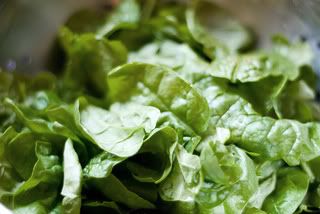
We’ve
said it before,
but we’ll say it again: Spinach is one heck of a vegetable! Spinach is a
great source of vitamin K and vitamin A, as well as folate, magnesium
and iron. In terms of specific health benefits, the various compounds in
spinach are thought to help reduce the risk of several types of cancer,
including tumors of the stomach, prostate, and skin, and also act as an
anti-inflammatory to reduce the severity of symptoms associated with
asthma, arthritis and other inflammatory conditions. When shopping for
spinach, look for firm, crisp, deep green leaves. Spinach is great as a
base for salads, delicious when added to soups or casseroles to provide
bulk or simply on its own, cooked, drizzled with olive oil and sprinkled
with salt and black pepper.
Zucchini
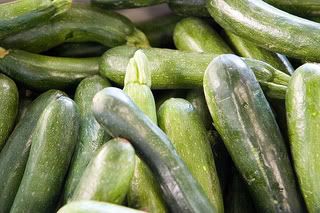
There is much debate surrounding whether zucchini is technically a
summer or fall vegetable – and even more debate over whether zucchini is
a fruit or a vegetable! – but suffice to say, it’s around for most of
the fall and definitely makes for a hearty addition to most fall dishes.
Zucchini is perhaps best known for its vitamin C content, but also is
considered a good source of vitamin A and lutein, which is important for
eye health, as well as folate and potassium. In addition, zucchini can
promote blood health, with studies suggesting that this tasty vegetable
can support capillary health and lower high homocysteine levels.
Thanks Jean B. for the Healthy Habits suggestion ;)
![Description: []](http://us-mg4.mail.yahoo.com/ya/download?mid=2%5f0%5f0%5f1%5f468632%5fAH7XiGIAACPPUGIjkwAWowRR8vI&pid=2.3&fid=Inbox&inline=1&appid=YahooMailNeo) A Tomato has four chambers and is red. The heart has four chambers and
A Tomato has four chambers and is red. The heart has four chambers and![Description: []](http://us-mg4.mail.yahoo.com/ya/download?mid=2%5f0%5f0%5f1%5f468632%5fAH7XiGIAACPPUGIjkwAWowRR8vI&pid=2.4&fid=Inbox&inline=1&appid=YahooMailNeo) Grapes hang in a cluster that has the shape of the heart. Each grape looks
Grapes hang in a cluster that has the shape of the heart. Each grape looks![Description: []](http://us-mg4.mail.yahoo.com/ya/download?mid=2%5f0%5f0%5f1%5f468632%5fAH7XiGIAACPPUGIjkwAWowRR8vI&pid=2.5&fid=Inbox&inline=1&appid=YahooMailNeo) A Walnut looks like a little brain, a left and right hemisphere, upper
A Walnut looks like a little brain, a left and right hemisphere, upper![Description: []](http://us-mg4.mail.yahoo.com/ya/download?mid=2%5f0%5f0%5f1%5f468632%5fAH7XiGIAACPPUGIjkwAWowRR8vI&pid=2.6&fid=Inbox&inline=1&appid=YahooMailNeo) Kidney Beans actually heal and help maintain kidney function and yes,
Kidney Beans actually heal and help maintain kidney function and yes,![Description: []](http://us-mg4.mail.yahoo.com/ya/download?mid=2%5f0%5f0%5f1%5f468632%5fAH7XiGIAACPPUGIjkwAWowRR8vI&pid=2.7&fid=Inbox&inline=1&appid=YahooMailNeo) Celery, Bok Choy, Rhubarb and many more look just like bones. These
Celery, Bok Choy, Rhubarb and many more look just like bones. These![Description: []](http://us-mg4.mail.yahoo.com/ya/download?mid=2%5f0%5f0%5f1%5f468632%5fAH7XiGIAACPPUGIjkwAWowRR8vI&pid=2.8&fid=Inbox&inline=1&appid=YahooMailNeo) Avocadoes, Eggplant and Pears target the health and function of
Avocadoes, Eggplant and Pears target the health and function of![Description: []](http://us-mg4.mail.yahoo.com/ya/download?mid=2%5f0%5f0%5f1%5f468632%5fAH7XiGIAACPPUGIjkwAWowRR8vI&pid=2.9&fid=Inbox&inline=1&appid=YahooMailNeo) Figs are full of seeds and hang in twos when they grow. Figs
Figs are full of seeds and hang in twos when they grow. Figs![Description: []](http://us-mg4.mail.yahoo.com/ya/download?mid=2%5f0%5f0%5f1%5f468632%5fAH7XiGIAACPPUGIjkwAWowRR8vI&pid=2.10&fid=Inbox&inline=1&appid=YahooMailNeo) Sweet Potatoes look like the pancreas and actually balance the
Sweet Potatoes look like the pancreas and actually balance the![Description: []](http://us-mg4.mail.yahoo.com/ya/download?mid=2%5f0%5f0%5f1%5f468632%5fAH7XiGIAACPPUGIjkwAWowRR8vI&pid=2.11&fid=Inbox&inline=1&appid=YahooMailNeo) Olives assist the health and function of the ovaries
Olives assist the health and function of the ovaries ![Description: []](http://us-mg4.mail.yahoo.com/ya/download?mid=2%5f0%5f0%5f1%5f468632%5fAH7XiGIAACPPUGIjkwAWowRR8vI&pid=2.12&fid=Inbox&inline=1&appid=YahooMailNeo) Oranges , Grapefruits, and other Citrus fruits look just like the
Oranges , Grapefruits, and other Citrus fruits look just like the![Description: []](http://us-mg4.mail.yahoo.com/ya/download?mid=2%5f0%5f0%5f1%5f468632%5fAH7XiGIAACPPUGIjkwAWowRR8vI&pid=2.13&fid=Inbox&inline=1&appid=YahooMailNeo) Onions look like the body's cells. Today's research shows onions
Onions look like the body's cells. Today's research shows onions











